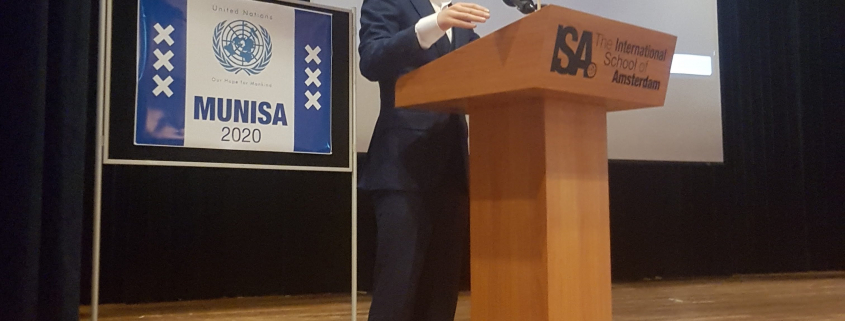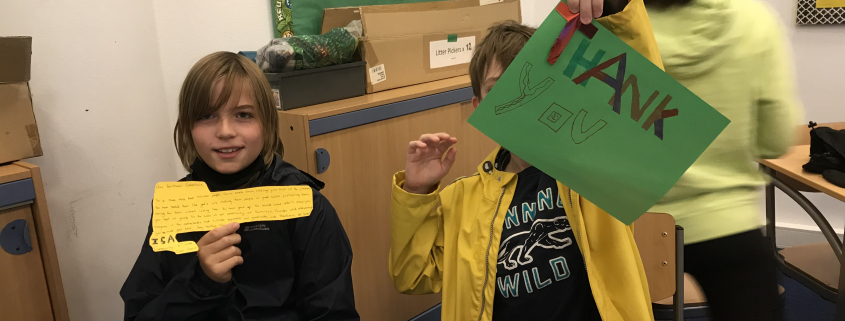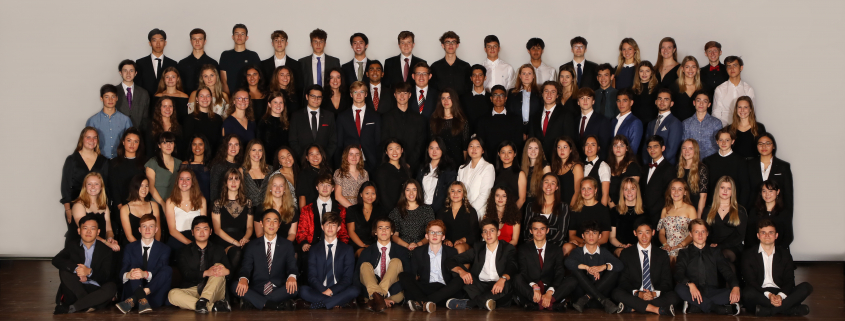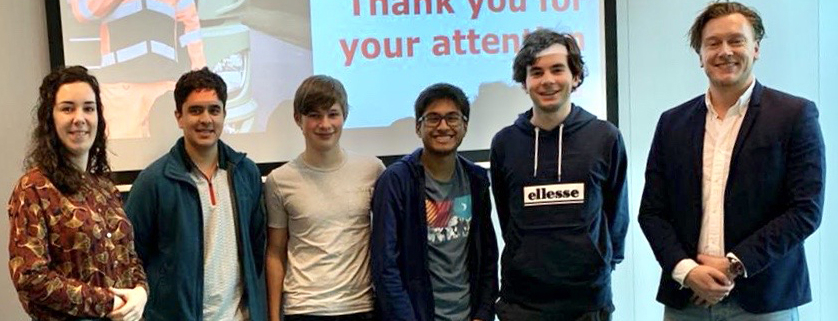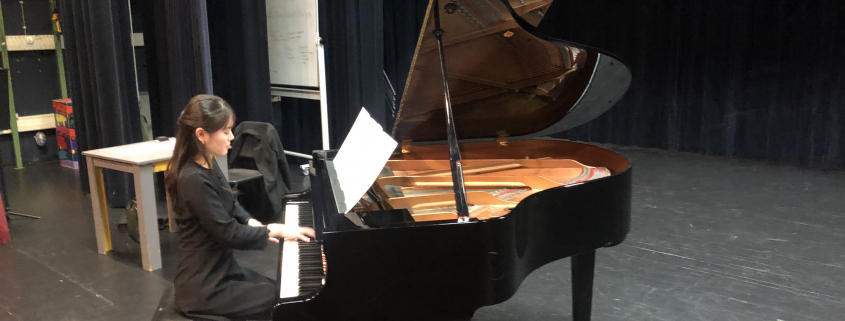Celebrating Student Success: Outstanding Achievement in French Language and Literature
/in All School, Upper SchoolISA Launches New Statement of Community
/in All School, Lower School, Upper SchoolOur fundamental purpose at the International School of Amsterdam (ISA) is to educate for international understanding. To accomplish this purpose, we aim to create a community of lifelong learners who value inquiry, critical and creative thinking, take informed risks, and act with integrity and compassion.
We recognize the integral role parents, families, volunteers, and service providers, i.e. our ISA community members, play as partners in the education of our students.
Our community upholds and promotes the ISA mission, vision and beliefs as follows:
1.0 Our Internationally-Focused Community
Unequivocally, ISA fosters a culture whose mission is to educate for international understanding. A hallmark of this culture is that the ISA community maintains an open, culturally-sensitive mindset which develops the inclination and confidence to reach out and learn about others. By developing deep awareness of oneself and others, within the context of our global community and our environment, the ISA community advocates for global awareness, intercultural understanding, and acceptance of perspective(s) that align with the values of the school.
Our community is committed to preparing students for the future they choose, by empowering students to own and explore their learning and develop their minds, character, and sense of community.
Our community promotes a responsible use of technology to support learning and develops an awareness of the legacy of a digital footprint.
Each ISA community member is an ambassador representing our school, both on and off campus, and a positive force for the growth and development of our internationally-minded Community.
1.1 Our Internationally-minded Administration, Faculty, Staff
Our administrators, faculty and staff (and any approved volunteer, student teacher, and/or service provider) of the ISA community are responsible for the welfare and growth of students. They positively and earnestly participate in school life, both within and outside of school, and positively enhance and safeguard ISA’s reputation throughout our ISA community, the Amsterdam region, the Netherlands, Europe, and the world at large.
Our administrators, faculty and staff are positive and constructive contributing team members that cultivate the dispositions of the learner profile in all they undertake, seeking to fully embody and model the characteristics of an internationally-minded, responsible global citizen.
1.2 Our Internationally-minded Parents
The parents of the ISA community are responsible for partnering with the administration, faculty, and administrative staff of the school to promote the welfare and growth of their children and others. They positively and earnestly participate in school life, both within and outside of schools, and positively enhance and safeguard ISA’s reputation throughout our ISA community, the Amsterdam region, the Netherlands, Europe, and the world at large.
Our parents are positive and constructive contributing members of the Community that cultivate the dispositions of the learner profile in all they undertake, seeking to fully embody and model the characteristics of an internationally-minded, responsible global citizen.
1.3 Responsible Choices in a Internationally-minded Community
ISA is committed to providing a safe environment for all community members. This includes ensuring that our school remains a drug-free campus.Therefore, while endeavouring to provide information to students about the risks associated with drug use/abuse, the school requires that all students and their parent(s)/guardian(s) recognise that ISA does not tolerate the sending, possession, use or distribution of drugs (defined as any narcotic, stimulant, depressant or hallucinogen taken in any manner, except as prescribed by a physician) on the school campus or any location where a school event is held. The administrators, faculty, staff, volunteers, service providers, and parents of the ISA community are responsible for their use of legal substances (drug, alcohol, other) particularly when on campus and at school functions. ISA has a zero-tolerance of illegal substance use (drug, alcohol, other) on its campus and on school-organised trips and sponsored events.
Any infractions will result in immediate disciplinary action, which may include referrals for treatment and/or removal from all aspects of ISA life (school and community), as well as potential legal prosecution in accordance with the laws of the Netherlands.
Responsible choices should also be reflected within interpersonal relationships by acting with respect and showing integrity in all forms of communication, whether in person or online.
2.0 Developing Character in Our Community
The ISA community is inclusive and demonstrates an appreciation of common humanity and a commitment to care for and collaborate with others. As such, each member of the ISA community promotes inclusiveness, respect, and dignity, and continuously nurtures integrity and compassion.
Further, each member of the ISA community focuses on continuously cultivating and supporting strong character growth, social and emotional wellness, and personal happiness.
Every decision that the school undertakes is driven by principles of equity with a collective heart for, and focus on, students.
The ISA community expects positive participation from each of its members, and it is our expressed desire and goal to have all members engaged in the life of the school, be it by volunteering, providing feedback, attending meetings and events, sharing unique and individual expertise, and/or additional action(s) that promote involvement and support our mission, vision and beliefs.
As a condition of joining the ISA community, each member (administrators, faculty, staff, volunteers, service providers, parents and students) has agreed to emulate and personify the school beliefs that serve as the foundation for all ISA individual and group relationships. These beliefs ensure a learning environment where all students can develop their minds through engaging in inquiry and reflection, expanding critical and creative thinking, and nurturing curiosity and open-mindedness.
2.1 Personal Conduct to support Character Development in our Community
Each individual (administrators, faculty, staff, volunteers, service providers, parents and students alike) is a role model to others in the ISA community. In their interactions with others (face-to-face, electronically, in small and/or large groups) they demonstrate integrity and honesty, along with empathy, compassion, and respect. Each individual is expected to refrain from negativity, and rumor spreading. There is no place for aggressive, discriminatory, accusatory, and/or threatening behavior of any kind.
Each Board member, Administrator, Faculty and Staff member, Volunteer, and Service Provider agrees to uphold the highest degree of personal conduct, in line with conduct standards, rules, and regulations set forth by school policies and procedures, and the laws of The Netherlands.
Additionally, each student and parent member of the ISA community agrees to abide by those same standards as an ongoing condition of the student’s enrollment at ISA and parents’ participation as an ISA community member. Any student or parent not conducting him/herself in alignment with the ISA values, standards of behavior, and principles underlying the school and ISA community at large at all times could be directed to the School Director for warning, disciplinary action, and /or removal from the school and the ISA community. Any volunteer, student teacher, or service provider is bound by these same agreements.
2.2 Child Protection in Our Community
The school recognizes its duty to provide the utmost of protection of its most valuable and vulnerable asset, its students. Hence, immediate action will be taken should any student whose welfare (both physical and emotional) is in any way threatened or adversely impacted by the conduct of those responsible for their care and protection (including parents, relatives, guardians, volunteers, service providers, or other adults in the student’s immediate environment).
Each ISA administrator, faculty, volunteer, student teacher, service provider, and staff member is duty-bound to report any incident of suspected child abuse (physical, sexual, or emotional) or neglect, to a member of the school’s Child Protection Committee, or failing that to his or her immediate supervisor, without hesitation. If/when deemed appropriate, a representative from the Child Protection Committee will contact local authorities. They will each also sign a confidentiality and non-disclosure agreement on an annual basis which prohibits any disclosure of sensitive information about a case or student.
2.3 Harassment in Our Community
The school will foster and promote a safe environment for students and adults alike that is free from any forms of harassment. Harassment including, but not limited to, religious beliefs, racial or ethnic background, gender, gender identity, sexual orientation, ageism, economic status, neurological and physical diversities will not be tolerated. The School prohibits harassment, violence, bullying or cyberbullying against any member of the ISA Community (administrators, faculty, staff, parents and students).
ISA has a rigorous zero-tolerance policy for, and will immediately investigate any reported or witnessed events of harassment, violence, or bullying. This extends to all students, parents, and employees of the ISA community.
Any violation of the ISA ethos will be met with formal disciplinary action, up to, and including removal from the school. ISA will clearly communicate and broadcast related policies to administrators, faculty, staff, parents and students through all formal website channels and portals, and guarantee that students are taught the relevant contents. Legal avenues will also be pursued if the violation rises to the level of explicit law violation.
3.0 Communication in Our Community
Effective communication forms the foundation for developing and maintaining effective partnerships. In order to maintain a connected, and positive ISA community, it is the school’s responsibility to provide frequent and timely communication that is of the highest significance, integrity, relevance, and transparency.
This applies to communication from the Board of Trustees, through the School Director, and/or communication from schoolwide and divisional leaders.
The school implements a number of communication channels that promote safe, respectful, and productive communication. Sometimes communication channels are two-way, in order for our member audiences to absorb and respond to messages, and sometimes one-way as appropriate.
Being a member of the ISA community demands positive collaboration and communication. The overall ethos of positive assumption, mutual respect, and openness is paramount. Each individual member of the ISA community commits to utilizing the school’s defined communication systems, communication standards, and communication channels to provide feedback or input in a manner that is courteous and constructive.
3.1 Our Community of Strong Connections
As with any school, and particularly in an international setting as diverse as Amsterdam, the ISA community is much stronger when it has members unified in diversity contributing to the growth and prosperity of the school.
Though many international schools have strong communities, we truly view the unified, diverse and vibrant school spirit at ISA as unique and one of the school’s strongest assets.
Each member of the ISA community brings a unique perspective as an individual, and we celebrate and embrace the diversity of all members. Each member actively knows, values, and advocates for one another. Individual members are expected to place connections and relationships at the heart of the school, and are called upon to provide their unique skillset, capabilities, and/or connections to positively enhance the standing and strength of the school. We welcome all opportunities to constructively engage with other ISA community members, in pursuit of strong relationships within local, national, and global communities.
ISA Success at the International Schools AMIS Solo and Ensemble Music Festival
/in Upper SchoolLast weekend, ISA Musicians in grades 6-12 participated in 22 solo and small group events at the Association for Music in International School’s Solo and Ensemble Festival which took place at the American School of the Hague. ISA students performed exceptionally well, with all students achieving a rating of Performance with Distinction (I+) or Performance with Merit (I). Noteworthy performances include Tanner Crites’ marimba solo and the Upper School Jazz Ensemble (Eliott Gairard, Francisco Fortanet and Wilson Porteus) who all received perfect scores from their judges. Three students, Hyelynn Choi, Natalie Parker and Alex Jin performed in the Honors Division, which required them to perform highly challenging works. Next year’s solo and ensemble event will take place on January 30, 2021; musicians, mark your calendars and start practising now!
Contact Us
Sportlaan 45, 1185 TB Amstelveen, The Netherlands
Telephone: +31 20 347 1111
Fax: +31 20 347 1222



